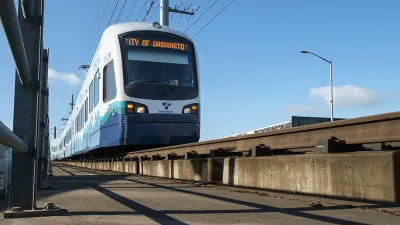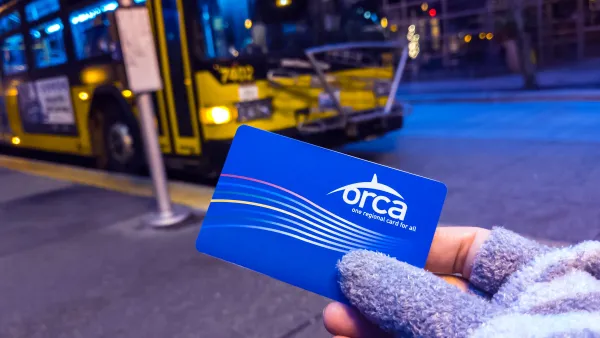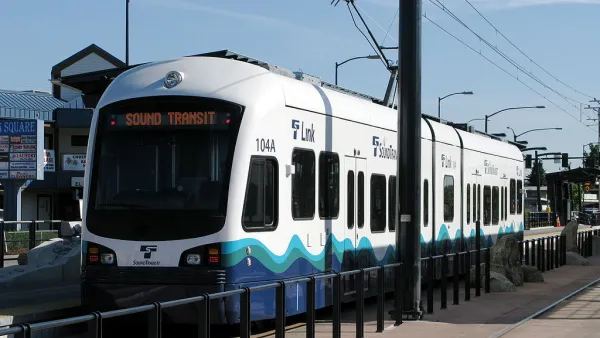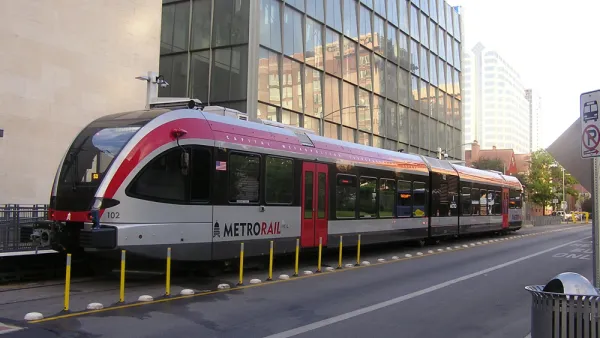Two funding sources for transit investments approved by Seattle voters in 2014 are paying dividends in 2017 in the form of improved, expanded service.

The city of Seattle recently completed an evaluation of transit investments in the Seattle Transportation Benefit District (SFBD), which is funded by a vehicle license fee and sales tax approved by voters in 2014.
"At the time, King County Metro Transit was facing funding shortfalls after exhausting reserves during the Great Recession when sales tax receipts were in decline, but by the time voters okayed the measure the proposal had flipped into one of service expansion to serve a growing city," reports Stephen Fesler.
The SFBD now produces an annual performance report on the success of the funding program in delivering investments in "transit service, ridership and on-time performance, access to frequent transit, and transportation equity initiatives such as the Youth ORCA Program and ORCA LIFT," according to Fesler.
In achieving those goals, the SFBD reports many successes—which cities with declining ridership and declining service should both envy and emulate.
Summing up the second year, the STBD reports that access to frequent transit service is way up from where it was in 2015 and surpassing current goals. Additionally, nearly 2,700 youth participated in a free transit pass program, and ridership on several RapidRide lines is up by double digits since 2015. Leading the pack in growth was the RapidRide C which grew 40% since 2015, averaging 11,600 daily rides by last count.
The second annual report is only the latest evidence of Seattle's leadership in public transit. In October, Planetizen reported on Seattle's increasing transit ridership, after repeatedly noting the city's declining number of solo car commuters and increasing adoption of alternative transportation modes.
FULL STORY: Looking Back on Two Years of Investment in Seattle Transit

Analysis: Cybertruck Fatality Rate Far Exceeds That of Ford Pinto
The Tesla Cybertruck was recalled seven times last year.

National Parks Layoffs Will Cause Communities to Lose Billions
Thousands of essential park workers were laid off this week, just before the busy spring break season.

Retro-silient?: America’s First “Eco-burb,” The Woodlands Turns 50
A master-planned community north of Houston offers lessons on green infrastructure and resilient design, but falls short of its founder’s lofty affordability and walkability goals.

Test News Post 1
This is a summary

Analysis: Cybertruck Fatality Rate Far Exceeds That of Ford Pinto
The Tesla Cybertruck was recalled seven times last year.

Test News Headline 46
Test for the image on the front page.
Urban Design for Planners 1: Software Tools
This six-course series explores essential urban design concepts using open source software and equips planners with the tools they need to participate fully in the urban design process.
Planning for Universal Design
Learn the tools for implementing Universal Design in planning regulations.
EMC Planning Group, Inc.
Planetizen
Planetizen
Mpact (formerly Rail~Volution)
Great Falls Development Authority, Inc.
HUDs Office of Policy Development and Research
NYU Wagner Graduate School of Public Service




























